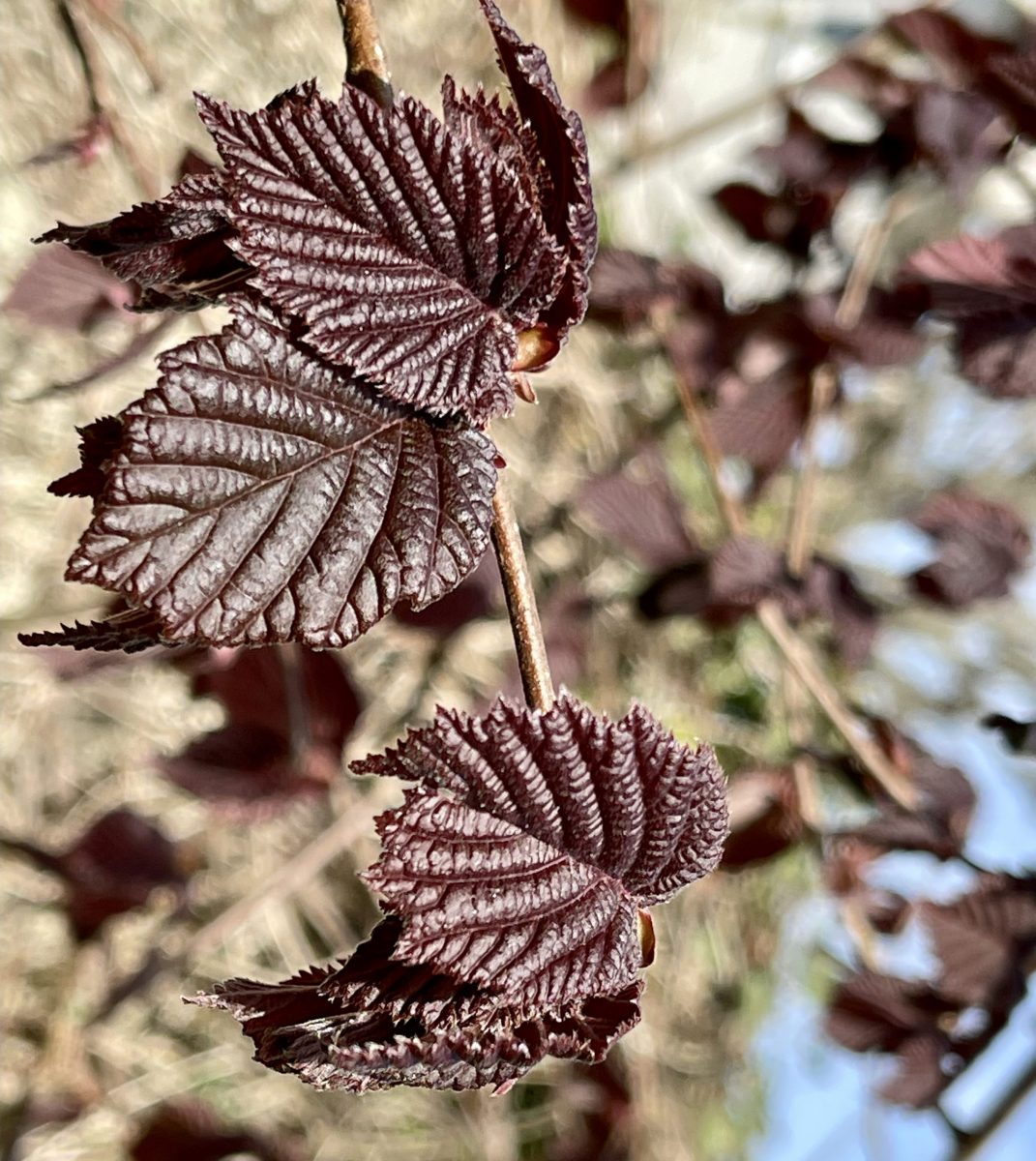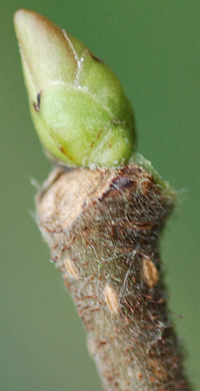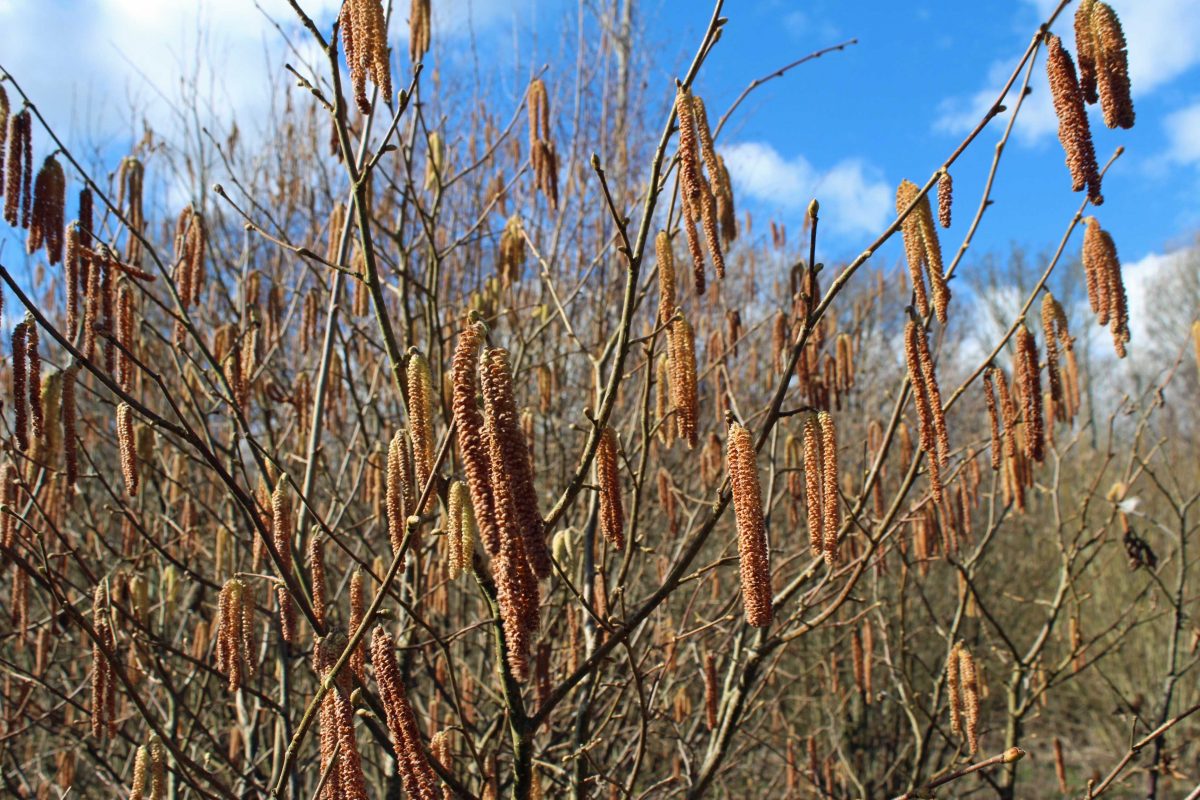Hazel
Hazel grows quickly, and though it may develop as a small, single stem tree it generally develops several stems at its base. For this reason, it was (and is) much used in coppicing; its stems are pliant, split and twist easily. The stems were and are used to make fences, walking sticks, wattles (as in wattle and daub) and hurdles. An un-coppiced tree may live for 60 or so years, but a coppiced tree may survive for hundreds if cared for / managed.
Leaf
The leaves are arranged alternately around the stem. They are almost round in shape but broadest near to the tip (apex) of the leaf. The edge of the leaf is noticeably toothed. The leaf stalk (petiole) and underside of the leaf are hairy.



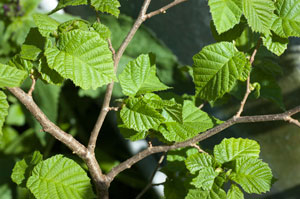
Bark & Stem
If not coppiced, hazel will grow as a small tree (about 15 M in height). Hazels will grow as an understory in oak woodlands. When coppiced, the stool (base) has multiple stems. The young stems may show signs of peeling (see photo) and have a bronze colour; older ones are a pale brown.
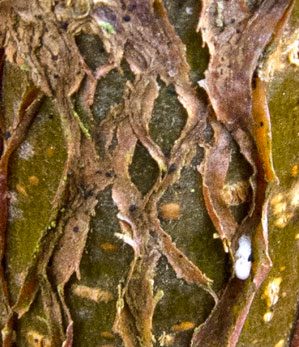
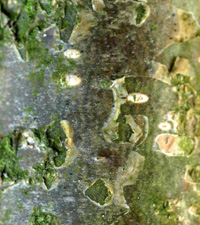
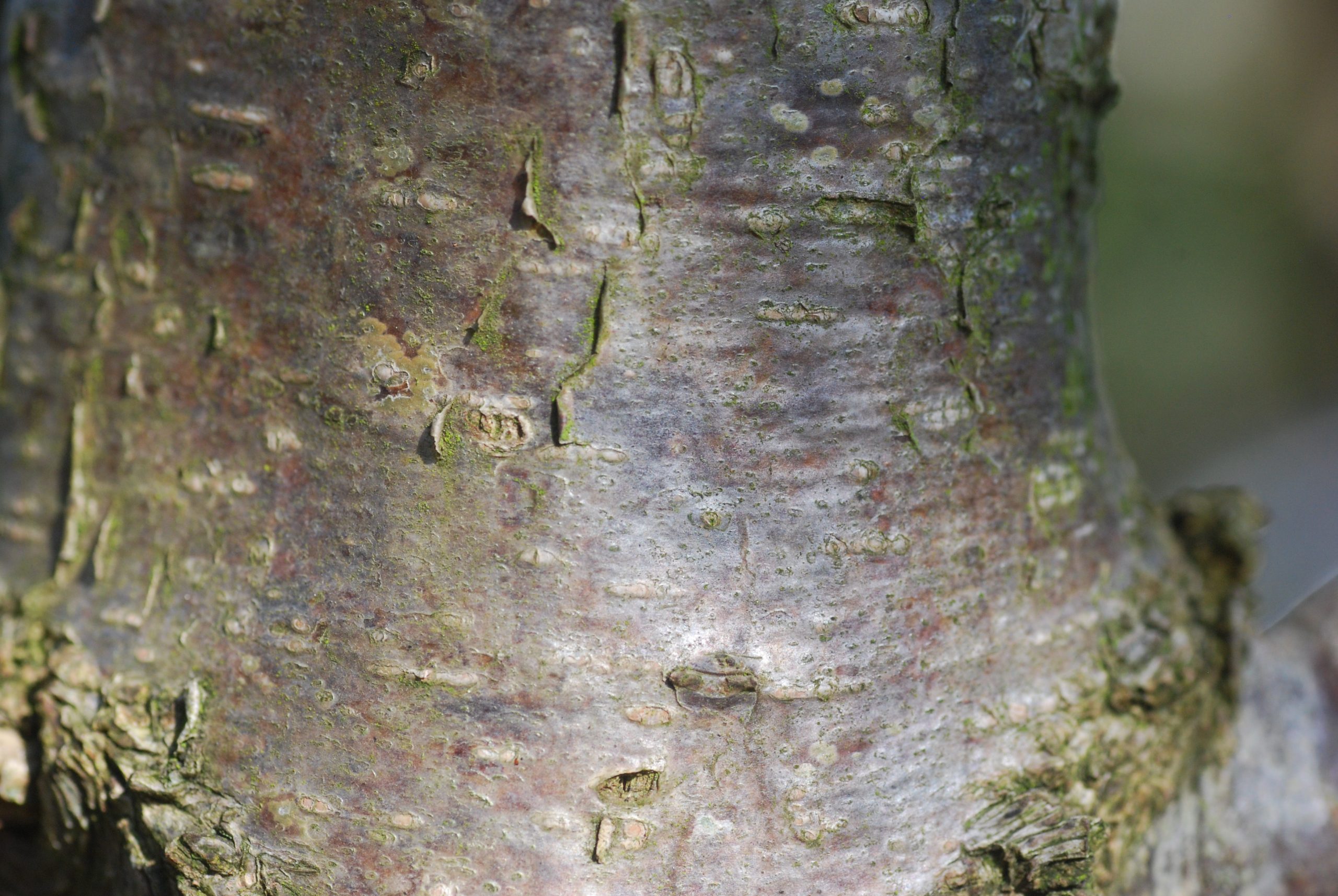
Flowers and Fruits
Male and female flowers are found on the same tree. The yellow male catkins open in early spring and sometimes referred to as ‘lambs tails’. The female flowers appear on the same branches as small pink/crimson tufts. Fertilised flowers may produce brown nuts in the autumn (though squirrels often eat them before they fully ripen). As it forms, the nut has an outer, green cover, called a husk (or involucre). The nuts ripen through late summer turning a rich brown colour. The filbert, is a type of hazel.
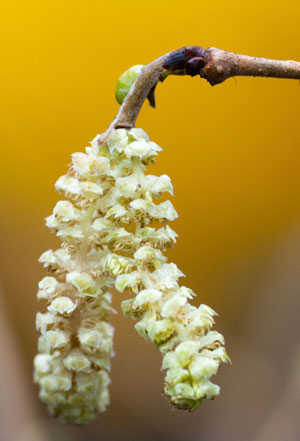
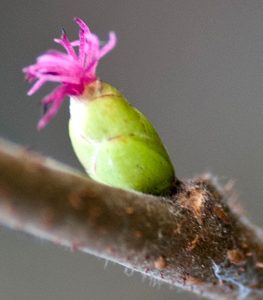

Winter Twigs/buds
The buds are green, rather ‘fat’ and oval.
